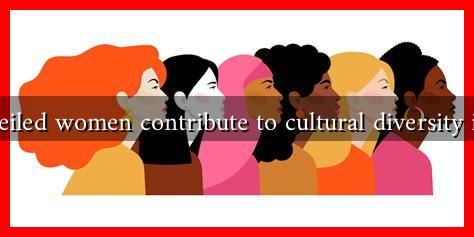-
Table of Contents
How Do Veiled Women Contribute to Cultural Diversity in Society?
The presence of veiled women in various societies often sparks discussions about cultural identity, freedom of expression, and the role of women in different cultures. While some may view veiling as a symbol of oppression, it is essential to recognize the multifaceted contributions of veiled women to cultural diversity. This article explores how veiled women enrich societies through their cultural practices, community engagement, and advocacy for social justice.
The Cultural Significance of Veiling
Veiling is a practice rooted in various cultural and religious traditions, primarily among Muslim women. However, it is also seen in other cultures, such as among some Christian and Jewish communities. The significance of veiling can vary widely, encompassing religious devotion, cultural identity, and personal choice. Here are some key aspects of its cultural significance:
- Religious Expression: For many women, wearing a veil is an expression of their faith. It serves as a reminder of their spiritual beliefs and commitment to their religious practices.
- Cultural Identity: Veiling can be a powerful symbol of cultural heritage. It connects women to their roots and traditions, fostering a sense of belonging within their communities.
- Personal Empowerment: Contrary to common perceptions, many veiled women assert that their choice to wear a veil is empowering. It allows them to define their identity on their terms, challenging stereotypes and societal norms.
Community Engagement and Social Contributions
Veiled women often play vital roles in their communities, contributing to social cohesion and cultural diversity. Their involvement can be seen in various areas:
- Education: Many veiled women are educators, teaching in schools and community centers. They often serve as role models for younger generations, promoting the importance of education and cultural understanding.
- Healthcare: In many societies, veiled women work as healthcare professionals, providing essential services and advocating for women’s health issues. Their unique perspectives can lead to more culturally sensitive healthcare practices.
- Art and Literature: Veiled women contribute to the arts by expressing their experiences through literature, visual arts, and performance. Their works often challenge stereotypes and provide insights into their lives and cultures.
Case Studies: Veiled Women in Action
Several case studies illustrate the positive impact of veiled women on cultural diversity:
- Malala Yousafzai: The Nobel Prize-winning activist, who often wears a hijab, advocates for girls’ education worldwide. Her story highlights the intersection of cultural identity and social justice, inspiring millions to fight for their rights.
- Rania Matar: A Lebanese-American photographer, Matar captures the lives of veiled women in her work. Her photography challenges stereotypes and showcases the beauty and complexity of their experiences.
- Women’s Organizations: Various organizations, such as the Muslim Women’s Network UK, empower veiled women by providing platforms for their voices and advocating for their rights. These organizations promote cultural diversity and understanding within broader society.
Statistics and Research Findings
Research indicates that veiled women often face discrimination and misunderstanding, yet they also contribute significantly to cultural diversity:
- A study by the Pew Research Center found that 62% of Muslim women in the U.S. feel that their religious identity is an essential part of their overall identity.
- According to a report by the Institute for Social Policy and Understanding, 67% of Muslim women believe that wearing a hijab has positively impacted their sense of community.
Conclusion: Embracing Cultural Diversity
Veiled women are integral to the cultural fabric of society, contributing to diversity through their unique perspectives, community engagement, and advocacy. By recognizing and valuing their contributions, societies can foster greater understanding and appreciation for cultural differences. It is crucial to challenge stereotypes and support the empowerment of veiled women, allowing them to share their stories and experiences. In doing so, we not only enrich our communities but also promote a more inclusive and diverse society.
For further reading on the contributions of veiled women to cultural diversity, you can explore resources from organizations like Muslim Women’s Network UK.

